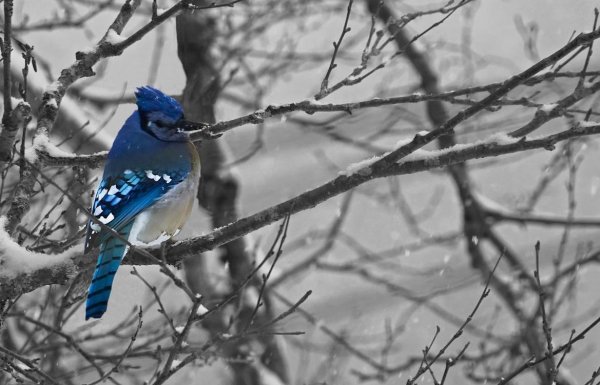Blue Jay
(Cyanocitta cristata)
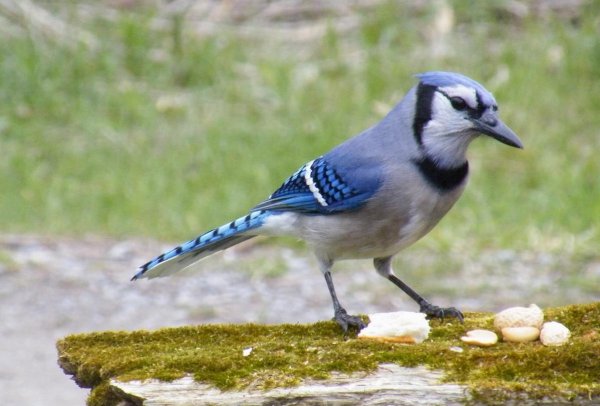
The Blue Jay's bold, jaunty behavior and noisy calls make this bird well known wherever it occurs. With its blue crest and back, and distinctive black necklace, the Blue Jay is unique among North American birds.
Size: return to top
- Length: 10.8 inches
- Wingspan: 15.0 inches
- Weight: 3.0 oz.
How To Identify: return to top
No other blue bird in North America has a color pattern quite like this Jay. It is blue on its back, crest, and tail, with a black necklace and white underparts. The blue in the wings and tail is barred with black, and it has a white wingbar.
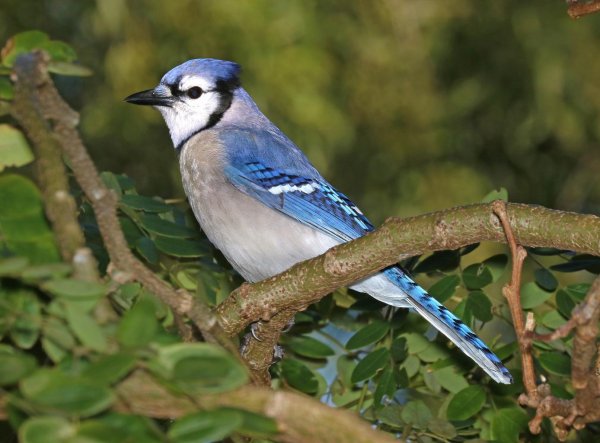
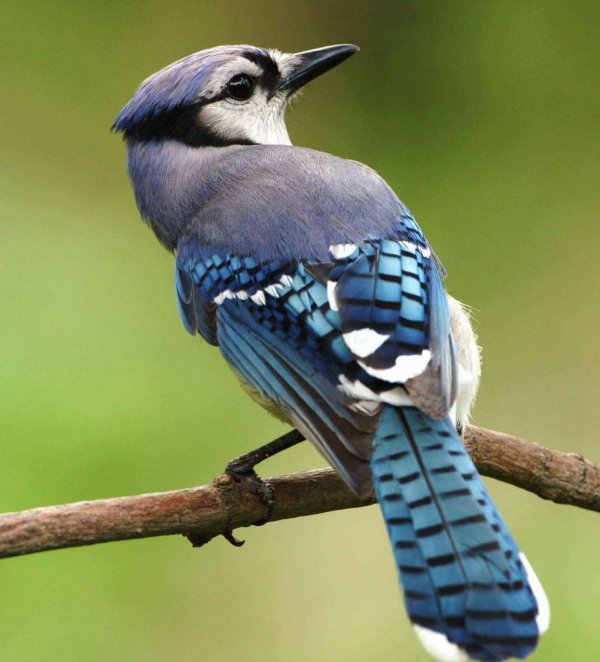
Range Map: return to top

Similar Species: return to top
Steller’s Jay
The Steller's Jay has a dark, almost black, crest and head, along with dark blue underparts.
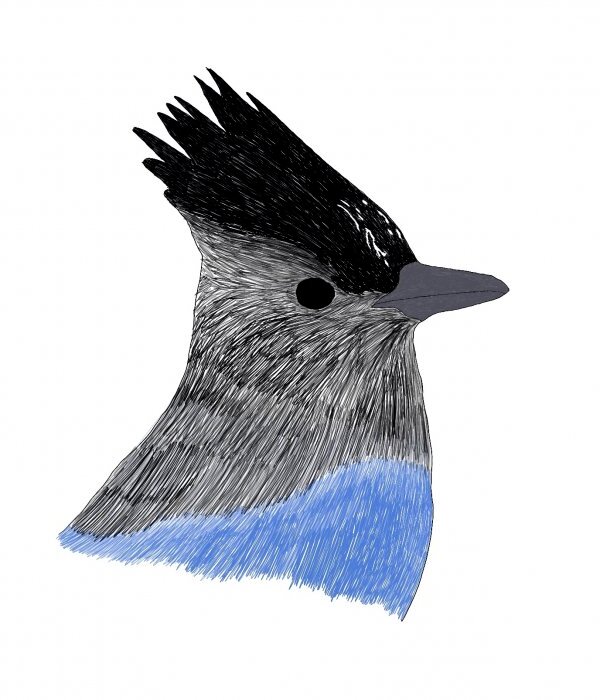 Steller's Jay Steller's Jay |
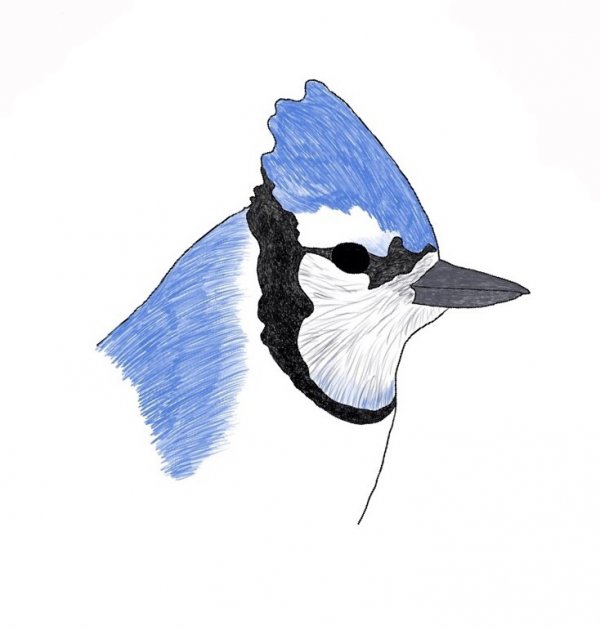 Blue Jay Blue Jay |
Eastern Bluebird
The Eastern Bluebird has rufous (brick red) on the throat and chest, while lacking the crest and the black barring in the wings and tail.
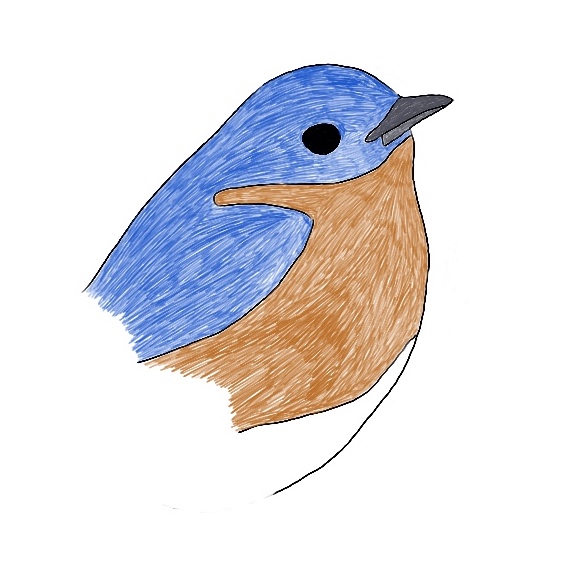 Eastern Bluebird Eastern Bluebird |
Western Bluebird
The Western Bluebird has a bold rufous color on the chest and sides. It also lacks the crest and black barring in the wings and tail of the Blue Jay.
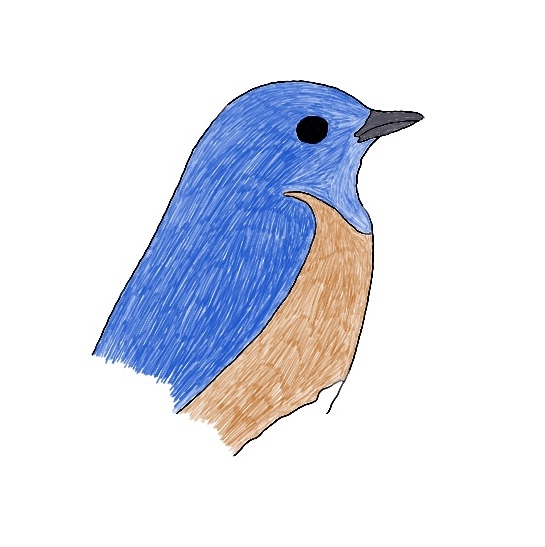 Western Bluebird Western Bluebird |
Mountain Bluebird
The Mountain Bluebird is blue all over, and it lacks the crest, black necklace, and black barring in the wings and tail of the Blue Jay.
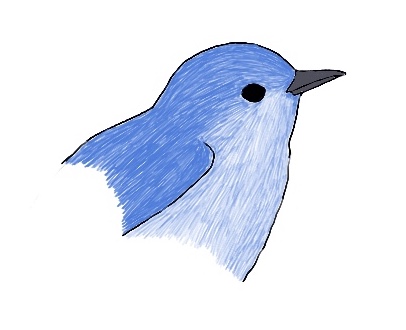 Mountain Bluebird Mountain Bluebird |
Florida Scrub-Jay, Woodhouse's Scrub-Jay, and California Scrub-Jay
These three Scrub-Jays all lack the blue crest and black necklace of the Blue Jay, as well as the black barring in the wings and tail. The face of the Scrub-Jay has some dark feathers on the side, but not all are as dark as this image shows.
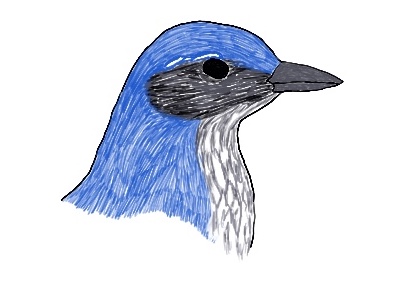 Scrub Jay Scrub Jay |
Habitat: return to top
Blue Jays live in a variety of forests, particularly ones with oak trees, and are common in urban and suburban areas.
Nesting: return to top
- Nest Type: open cup
- Nest Location: nests are placed in crotches of branches or thick outer branches; will use either deciduous or coniferous trees; nest height ranges from 10-25 feet off the ground
- Clutch: 4-5 eggs (range of 2-7)
- Incubation Period: 16-18 days
- Nestling Period: 17-21 days
Diet: return to top
Blue Jays are omnivorous, eating insects and other invertebrates, carrion, bird eggs and nestlings, and a variety of acorns, fruits, and nuts. They readily come into feeders for sunflower seeds and peanuts.
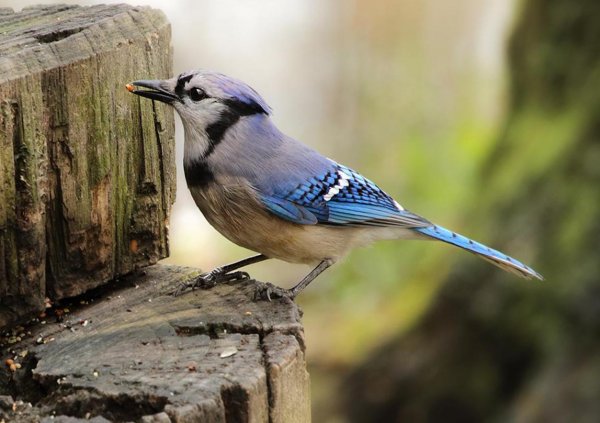
Notes: return to top
Blue Jays are not actually blue. The blue color comes not because of a blue pigment, but because the feathers have cells that scatter light, leaving the impression of blue.
They are known to mimic the calls of hawks, particularly those of the Red-shouldered Hawk. This is often thought of as a means to scare away other birds from feeders since Red-shouldered Hawks are known to kill other birds for food.
Blue Jays have a reputation for eating the eggs and nestlings of other bird species, but studies have shown that this constitutes only a minor part of their diet.
